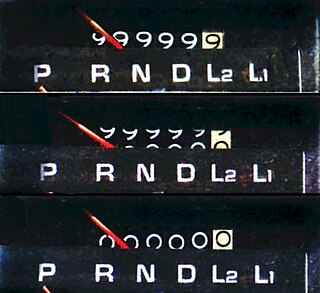Integer overflow
in programming, a condition that occurs when an arithmetic operation attempts to create a numeric value that is outside of the range that can be represented with a given number of digits From Wikipedia, the free encyclopedia
Remove ads
Integer overflow occurs in computers, when the number which is stored becomes larger than the capacity of the memory it is stored in. The most likely result is that the number will reset to 0 and start over.

For example, start with the number 14, using 4-bits integers. Add 1 a few times, this will result in an overflow, which causes it to reset the number to 0.
Another result is the number will reset to the most negative number, if the number has a sign. This is because negative numbers are represented by values after the maximum positive value.
For example, with signed 4-bit integers. Adding 1 will cause this type of overflow:[1]
Remove ads
References
Wikiwand - on
Seamless Wikipedia browsing. On steroids.
Remove ads
